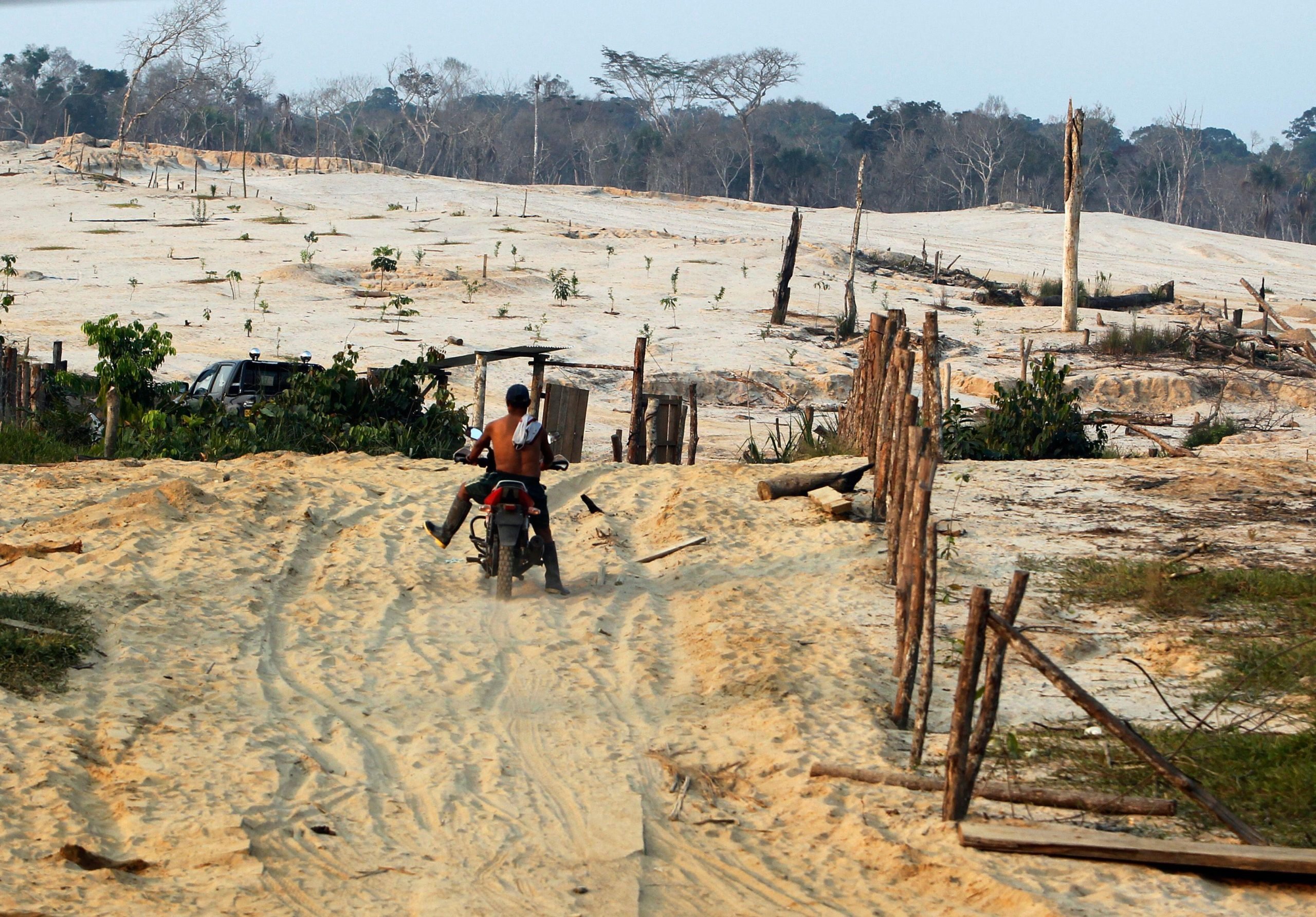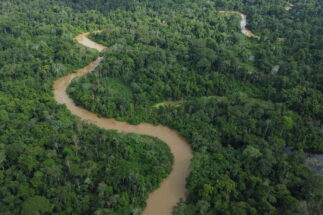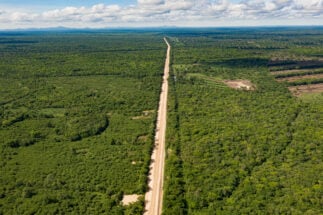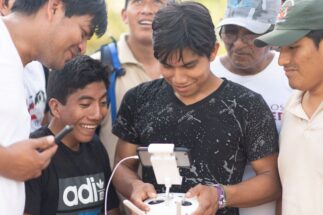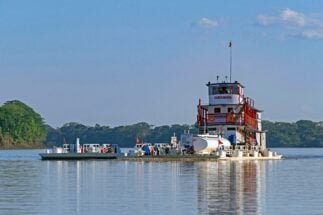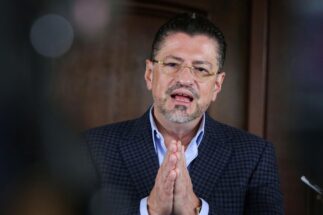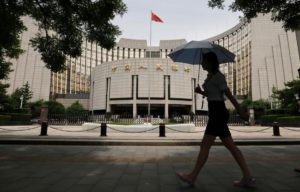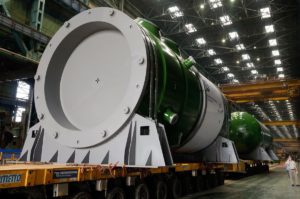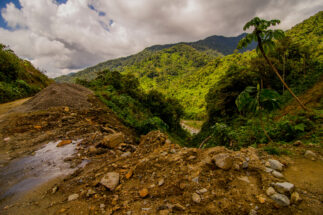At the beginning of 2011, as construction of the Southern Interoceanic Highway entered its final phase, the promise of greater trade between Peru and Brazil was drawing nearer. This had always been the goal for the 2,500-kilometre road connecting the Pacific Ocean in Peru with the Atlantic in Brazil, as an objective set by former Peruvian president Alejandro Toledo when work began in 2006, and maintained by his successor, Alan García.
This Peruvian leg of the Interoceanic Highway, known as the Interoceánica Sur, cost almost US$2 billion to complete its five sections, which cross the departments of Cusco, Madre de Dios and Puno, all of which are located in the southeastern Peruvian Amazon. According to official figures, the required investment was US$1.2 billion more than initially planned.
The Odebrecht scandal
Investigations into shady deals at Brazilian construction conglomerate Odebrecht uncovered widespread corruption, implicating high-profile figures across the region, including three former Peruvian presidents for their role in contracting for the Interoceanic Highway.
From the off, the project was shrouded in irregularities. To begin with, it did not go through Peru’s National System of Public Investment (SNIP), the administrative body that inspects and certifies public projects. There was also constant modification of contracts, which overvalued sections 2, 3 and 4 of the road. The disgraced, corruption-plagued Brazilian construction conglomerate Odebrecht (now Novonor) was part of the Conirsa consortium that built sections 2 and 3, together with the Peruvian companies Graña y Montero, JJ Camet and Ingenieros Civiles y Contratistas (ICC).
Section 4 was built by the Intersur consortium, composed of the Brazilian firms Andrade Gutierrez, Camargo Corrêa and Queiroz Galvao. In 2016, all three companies were implicated in Operation Car Wash: the largest corruption investigation in Brazil’s history, which had repercussions across Latin America. Multiple cases of bribery to obtain contracts were uncovered, including several that involved three former Peruvian presidents in relation to the Interoceánica Sur.
Alejandro Toledo (2001–2006) is under investigation for allegedly receiving US$20 million for awarding Odebrecht the works. Alan García (1985–1990 and 2006–2011) committed suicide in 2019 as he faced arrest over the granting of the contracts for sections 2 and 3 to the company. Meanwhile, Pedro Pablo Kuczynski, the economy minister during Toledo’s government and president from 2016 to 2018, is currently under a three-year house arrest for his involvement in the Odebrecht scandal.
Eleven years after construction finished, the Interoceánica Sur has failed to live up to its promises of trade and development. For Peruvians, the highway not only brings to mind these unprecedented corruption scandals, but it has also brought serious environmental and social damage in the areas through which it passes, including indigenous territories.
Illegal mining corrodes communities
The last time Liz Ruiz saw the waters of the Inambari river run clear was 15 years ago. Then, she and others from the Harakmbut indigenous group could still fish in the section of the river that runs through the Arazaire native community in Madre de Dios, without fear that the shad and bocachico fish they caught were contaminated. So clear was the water, and so abundant the fish, that she would often simply watch them pass her by.
But today, as Ruiz looks upon the murky flow of the Inambari, it sometimes feels as if none of this ever really happened. Illegal mining sites that have expanded near her village drain mercury into the river at all hours. The Interoceánica Sur, say the Harakmbut, has contributed to this scourge.
Until 2020, Liz Ruiz was the chief of Arazaire, a community located at kilometre 162 of the highway and home to 25 families. In official records, Arazaire comprises 658 hectares, but the former chief estimates that the territory has now been reduced to less than 500 hectares. Part of what was lost, she says, were forests and farms next to the Inambari, razed after illegal miners diverted the river to extract gold along the riverbank.
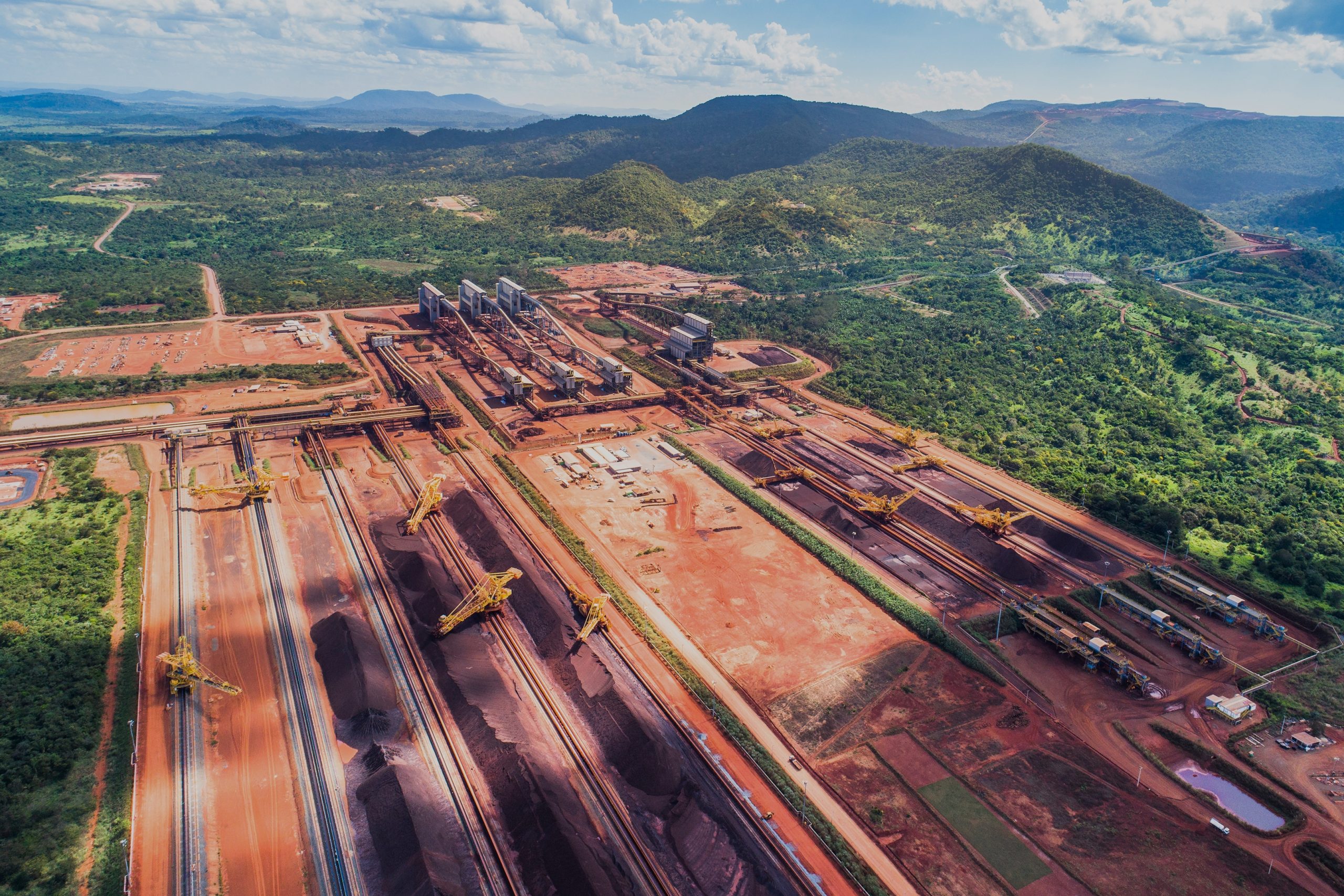
There are 10 mining concessions in their village. Its residents say that, since its construction, the Interoceánica Sur has allowed gold prospectors access to the areas closest to the road, and that this is the case in Arazaire. They allege that there are concessionaires who rent the areas granted to them by the state to the miners.
With the construction of the road, this community also saw another piece of their territory disappear. Ruiz says that the route of the road was built to pass through Arazaire, without the leadership of the people having even been consulted. Other Harakmbut have the same unease, telling how settlers from the highlands and the north of Peru began to settle in their village, with their sights set on mining, until they formed their own village, that they now do not want to leave.
“They call it Villa Santiago,” one resident says, adding that they only noticed and discovered the settlement’s name after consulting digital maps.
Julio Cusurichi, president of the Native Federation of the Madre de Dios River (FENEMAD), which groups together the 37 indigenous communities of this region, has no doubt that the Interoceánica Sur has been a determining factor in the “massive and accelerated invasion” of these settlers. Cusurichi details that since 2001, the state has granted mining concessions in ten communities in Madre de Dios. In cases such as Arazaire, there are areas where these permits exist but have also gradually become enclaves for illegal miners. In the absence of updated territorial limits, Cusurichi explains, the miners took advantage of the situation to invade and stay.
“Their strategy is to say that because there is no geo-referencing [available for mapping], they don’t know if they are inside or outside the communities,” he says.
Large-scale deforestation
There are many who feel there are flaws in the construction of the Interoceánica Sur, and that these stem from its planning. Luis Hallazi, a researcher at the Instituto del Bien Común, a Peruvian association that works with rural communities for the optimal management of their resources, argues that the environmental impact studies carried out for the project were very weak. In fact, the project did not have a comprehensive environmental impact assessment, and even less so for the Amazonian area it crosses. In other words, indirect consequences that the road has engendered, such as deforestation and illegal mining, and which have now spilled over, were not foreseen.
A study by the Centro de Innovación Científica Amazónica (CINCIA) revealed that during the construction period of the highway (2006–2011) the rate of deforestation in the southeastern Peruvian Amazon increased by 425%. It went from 2,010 hectares per year in 2006 to 8,536 hectares per year in 2011. The same report shows that 95,750 hectares were deforested for gold mining between 1985 and 2017. Perhaps most alarming is that the majority of this devastation, 64,586 hectares, occurred from 2009 onwards.

Biologist Juan Loja, director for Madre de Dios at the Association for the Conservation of the Amazon Basin (ACCA), points out that in 2009, precisely during the completion of some work on the Interoceánica Sur, gold fever broke out in the department. He points out that the road allowed access to areas that were previously difficult to reach and which later became huge centres of mining exploitation. He points to La Pampa as an example, an area located in the buffer zone of the Tambopata National Reserve, between kilometres 98 and 115 of the road.
According to a report by the Monitoring of the Andean Amazon Project (MAAP), by 2019 forest degradation in La Pampa reached 173 hectares per month, before an intervention against illegal mining – dubbed Operation Mercury – was ordered by the Peruvian government in February of that year. Loja maintains that the degradation due to illegal mining in La Pampa has reached 35,000 hectares.
“The Interoceánica Sur has also invited the appearance of secondary roads. They are not well built, but they lead to natural resources,” he says.
ACCA’s Madre de Dios operation manages the forestry concession of the Los Amigos river. This is a forest of 100,000 hectares that is home to indigenous people in voluntary isolation. Juan Loja says that until 10 years ago, the area did not have any problems with illegal logging as there was no road linking it to the Interoceánica Sur. However, six years ago, heavy deforestation began, which, in his opinion, was a consequence of the opening of one of the secondary roads linking the highway to the forestry concessions.
According to the Ministry of Environment’s forest programme, between 2001 and 2020, 254,153 hectares of forest were lost in Madre de Dios department. Meanwhile, a study by CINCIA highlights that in 2017 alone, this region saw forest degradation of 9,860 hectares due to gold mining, which represented 6.9% of the total deforestation in Peru for that year.
Ciro Salazar, a governance and environmental management specialist at Derecho, Ambiente y Recursos Naturales (DAR), a Peruvian NGO, told Diálogo Chino that as soon as the state considers that road infrastructure will contribute to boosting trade and bring the population closer together, it will not seek to evaluate Amazon-specific criteria.
“Planning on the coast is not differentiated from planning in the jungle. The environmental, geographic and cultural realities of the Amazon are not considered. Nor does it take into account the previous effects generated by a road,” he explains.
Short-sightedness creates problems
A lack of foresight when the project was conceived left an open door for the dynamics of illegality that have surrounded the Interoceánica Sur. Land rights in the communities located along the road are a case in point. Juan Loja suggests it was obvious that the project would lead to migration, and in the face of imminent incursions, the legal insecurity of the communities played a fundamental role.
The biologist estimates that there are 7,500 farmers in Madre de Dios without a land title, and to whom the Peruvian state has never given much consideration. Julio Cusurichi says that of the 37 native communities in Madre de Dios, eight are not titled, despite long years of proceedings to gain this recognition. It is in these areas, and in those titled but without updated boundaries, that encroachment and progressive land dispossession are taking place.
When we wake up from the idea of unplanned developmentalism, this will be an emblematic case of what not to do
Moreover, the objectives set by the Peruvian government to improve trade with Brazil and attract more tourists are now quite distant. Ciro Salazar argues that the Interoceánica Sur route is becoming less and less interesting for Brazilian producers, and that this is reflected in the current state and private investments in river ports, waterways and railways. But this is nothing new, and was arguably already the case by the time the road began operating. According to CómexPeru, a foreign trade association, in the first five years after the road opened, trade with Brazil accounted for barely 2% of Peru’s total.
“There were also high expectations in terms of attracting tourists from Brazil. But Madre de Dios has only been a passing place,” Loja notes.
The Interoceánica Sur highway has brought different sectors of the southeastern Peruvian Amazon closer together: during the rainy season, it could take a farmer in the most remote areas of Madre de Dios as many as 15 days to reach neighbouring departments. But with the arrival of the road, the same journey could now be made in about ten hours, even during periods of heavy rainfall. The prices of food and construction materials have also gone down because they now arrive more easily.
However, for many of the communities in the areas around the Interoceánica Sur, whose land and lifestyles have seen dramatic changes in the past 15 years, the environmental and social impacts of the highway take precedence over any benefits the road has brought. As the Instituto del Bien Común’s Luis Hallazi describes it: “When we wake up from the idea of unplanned developmentalism, this will be an emblematic case of what not to do.”
